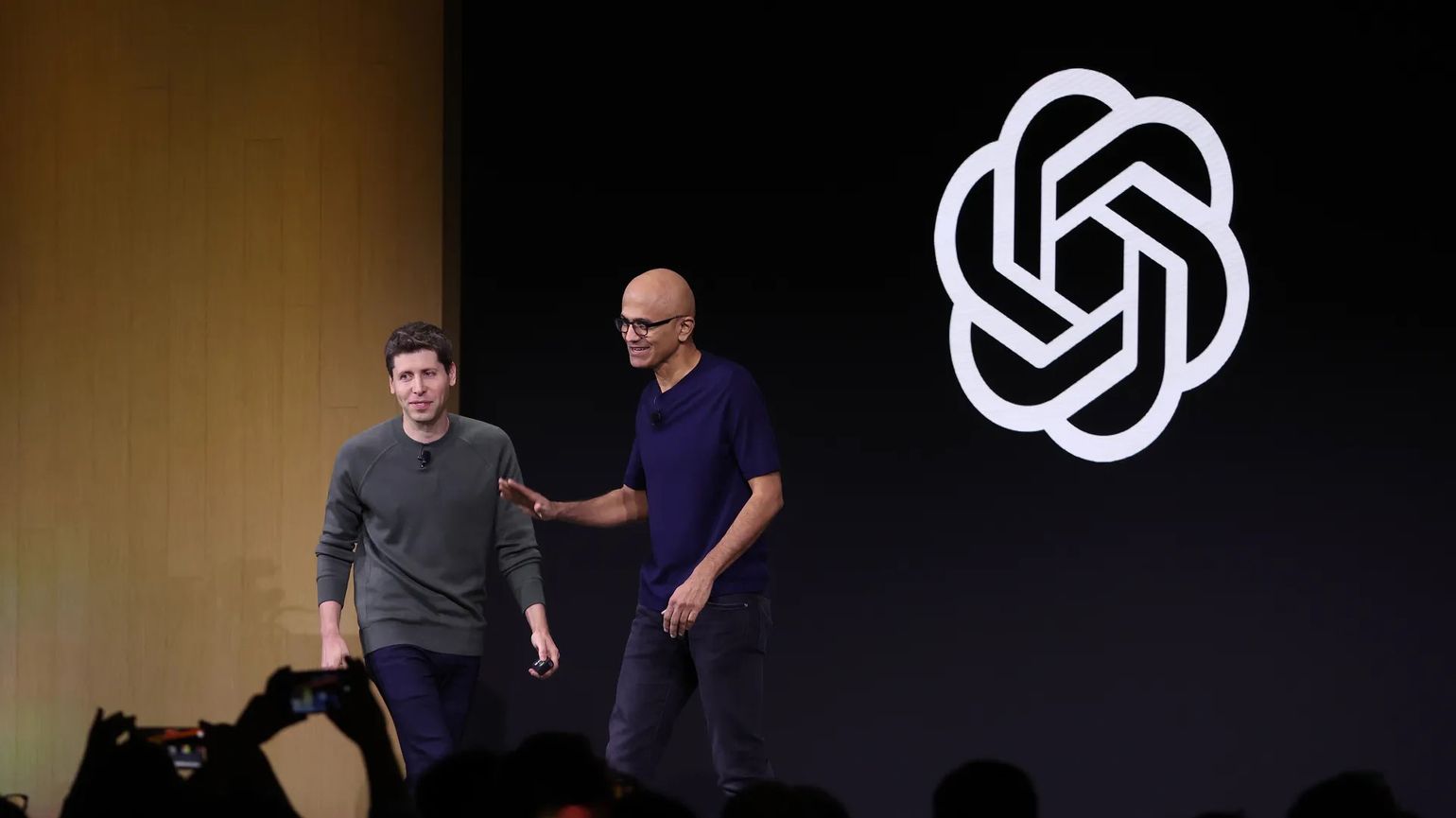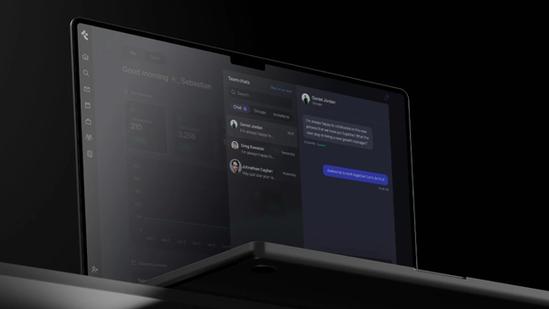Stargate vs DeepSeek: Has the Case for AI Infrastructure Investment Changed?


The US took a giant leap in the AI arms race with the $500bn OpenAI-led infrastructure plan. China took only a week to counter with its own ‘Sputnik’ moment, leaving many investors in space.
- With unprecedented scale, Stargate Project promises to accelerate the domestic and international AI arms race, focusing US investments firmly on infrastructure.
The Stargate Project, a joint venture that plans to funnel hundreds of billions of dollars to AI infrastructure in the United States, is well-named, drawing grand comparisons with the Manhattan Project and the Apollo Program, with a note of sci-fi.
In the 1994 movie Stargate, which inspired the name, the heroes traverse the universe through an alien portal in a top-secret government facility. The AI Stargate Project, announced in January, has more to do with data centers, fiber optic bandwidth and semiconductor supply chains. But the consortium behind it – OpenAI, SoftBank, Oracle and the Abu Dhabi sovereign fund MGX – assert that the impact will be just as profound.
With an investment target of $500bn over the next four years, contingent on raising external capital, Stargate amplified the investment case for AI infrastructure, with the U.S. as the prime place to build it.
It took one week for that triumphant narrative to change, as awareness grew of AI models released by China’s DeepSeek that required significantly less processing power to develop and run. DeepSeek rattled listed tech stocks and was described as a ‘Sputnik moment’, casting instant doubt on American AI supremacy, just as the famous Soviet satellite did in the postwar Space Race.
Investors, whose support of digital infrastructure is premised on the upward trajectory of AI demand for computing power, are rightly wondering how the twin events of January 2025 have changed the game.
Understanding which was the more consequential event requires addressing three questions.
1 - Did Stargate actually change anything, before DeepSeek spoiled the party?
Developing and deploying more powerful AI models requires greater data storage, transmission and processing capacity, underpinned by powerful chips and a secure, sustainable energy supply. Current infrastructure lags far behind the current pace of development, with a trillion dollars required over the next five years in the US alone, according to Dell’Oro Group. Stargate alone would provide half that figure. Microsoft – OpenAI’s main investor and a technology partner for Stargate, but not a financial backer – independently announced $80bn in annual, AI-related capital expenditure, only weeks before.
“It’s the largest investment of its kind, nothing like this has ever happened before,” says Open Institute of Technology Professor Tom Vazdar, referring to Stargate. “Its scale is driving an AI arms race.”
Internationally too, Stargate has raised the stakes. If others don’t keep up, Vazdar says, US firms will dominate AI computing power capacity and maintain their edge in large-scale AI models.
That is, of course, if Stargate does deploy $500bn in capital. The Financial Times reported that OpenAI and SoftBank had committed $15bn each, while The Information put it at $19bn each, with a further $7bn from Oracle and MGX. Those are impressive sums, but far below $500bn or even the $100bn that Stargate said it would begin deploying immediately.
So far, its only firm commitment is to a data center in Abilene, Texas, which was already under construction for Oracle. But it insists more projects are in the pipeline.
Stargate’s pockets aren’t endlessly deep, so it will be hard to quantify its impact until its external fundraising total becomes clear.
Salford Business School economist Dr Richard Whittle says that Stargate has already achieved something, not least by securing the Trump administration’s blessing and promises of support around regulation and permits.
“It gives US AI funding more direction. It’s a big signal to the market that we’re prepared to do whatever it takes,” Whittle explains.
Both Whittle and Vazdar suggest that by putting infrastructure and large developers front and center, Stargate could increase overall investment but also divert capital from other areas of AI, such as smaller startups doing software innovation or security and regulatory frameworks.
2 - Was DeepSeek really China’s Sputnik moment?
According to many benchmarks, DeepSeek’s open-source V3 (standard), R1 (reasoning), and Janus Pro (image) models appear competitive against US market leaders, although how competitive is debated.
However, DeepSeek hasn’t leapfrogged America’s leading AI models’ capabilities, or even necessarily caught up with them. Dario Amodei, CEO of Anthropic, a rival AI firm, wrote that: “DeepSeek produced a model close to the performance of US models seven to 10 months older… it is not a unique breakthrough or something that fundamentally changes the economics of LLMs [large language models].”
What the Chinese model has going for it, however, is cost. According to Anthropic co-founder Jack Clark, DeepSeek is “a one-way ratchet forward,”, because R1 is currently 20 times cheaper to use than OpenAI rival GPT-o1.
Partly, that reflects discount pricing and the exponential drop in costs generally as algorithms become more efficient. But it also reflects genuine innovations in AI efficiency in China, not just at DeepSeek but at competitors like Alibaba and ByteDance too.
Vazdar, the Open Institute of Technology professor, describes DeepSeek’s models as “biased and old technology”, but highly affordable. “DeepSeek has shown you can create powerful models with old hardware,” he says, despite US export controls on high-end chips.
What makes DeepSeek a Sputnik moment is that Chinese AI companies are now meaningfully competitive and competing in a new way, emphasizing value for money over capability.
“If consumers and businesses choose value for money over leading-edge performance, they will likely use less data, bandwidth and power, with implications for infrastructure investment. ”
3 - Do low-cost Chinese models mean we need fewer US data centers?
The ‘Stargate view’ of AI assumes the future will be determined by frontier model capability, itself determined by the scale and infrastructure. The more you can spend training a model, the better it will be, with limits set by “chips, data, energy and talent”, as OpenAI puts it.
By making AI development cheaper and more accessible, DeepSeek has some investors questioning this assumption. “They’re realizing that AI progress isn’t just about infrastructure,” Vazdar says, opening opportunities in smaller, more focused models and industry-specialized AI.
If consumers and businesses choose value for money over leading-edge performance, they will likely use less data, bandwidth and power, with implications for infrastructure investment.
“There is now the chance of something fundamentally unexpected coming to invalidate that investment,” says Whittle, but the risk was always there. “It only increases the perceived risk. That perception hasn’t really been in the market for the past four or five years, and suddenly it is.”
Much depends on whether investors expect efficiency or scale to ‘win’, but it doesn’t have to be either/or. Efficiency may be one strategy among many, rather than the sole new focus of AI everywhere. There is room for leading-edge, capability-based models, alongside those that prioritize value for money.
Leading US AI firms have talked about improving their models’ efficiency, learning from DeepSeek’s specific innovations or its open-source approach. Still, it’s telling that no one’s talking about slowing down investment. Indeed, French President Emmanuel Macron announced €109bn ($114bn) in AI infrastructure investment in February, explicitly positioning it as ‘France’s Stargate,’ weeks after the DeepSeek shock.
Ultimately, even if the market prioritizes efficiency and AI infrastructure demand growth slows, there will still be rapid growth in absolute terms because more people are using more and more powerful AI models – even when they’re coming from China.
“Let’s call it a Sputnik moment. Sputnik did not cease [the Space Race] or competition. It accelerated it. I expect DeepSeek to do the same,” Whittle says. In that sense, DeepSeek and Stargate were both strides in the same arms race. “If we want AI to live up to its promise, which it’s nowhere near living up to, then much more investment is needed at a global scale.”
Picking a winner
In short, AI model development has focused on scale, as exemplified by the Stargate Project. However, as DeepSeek’s success has shown, efficiency is becoming more important.
The US and China seem to be pursuing different strategies based on their relative strengths, but both approaches will still require massive AI infrastructure spending.
Investors should watch for signs of market preference to determine whether the demand for cutting-edge performance outweighs the appeal of cost-efficient AI.
ThinQ by EQT: A publication where private markets meet open minds. Join the conversation – [email protected]




